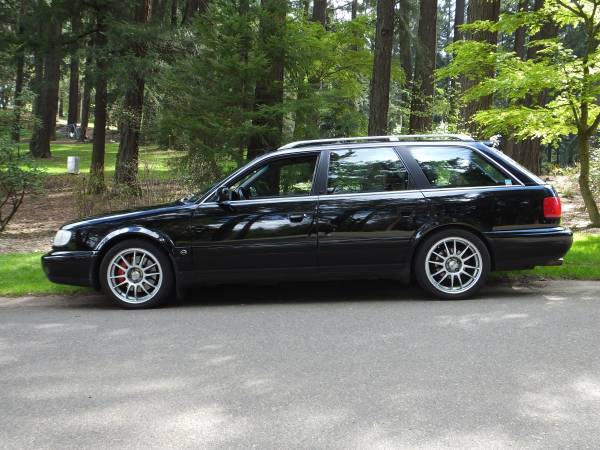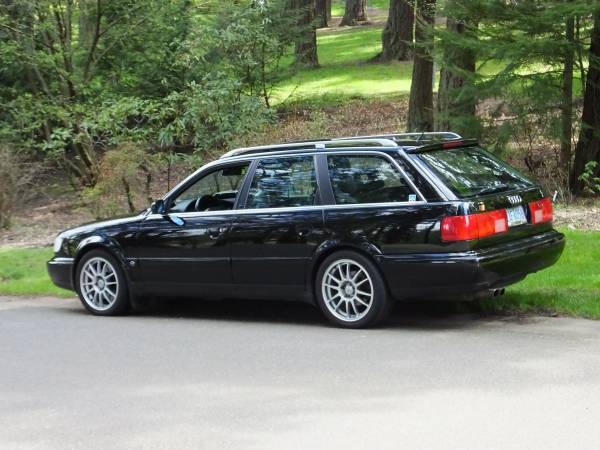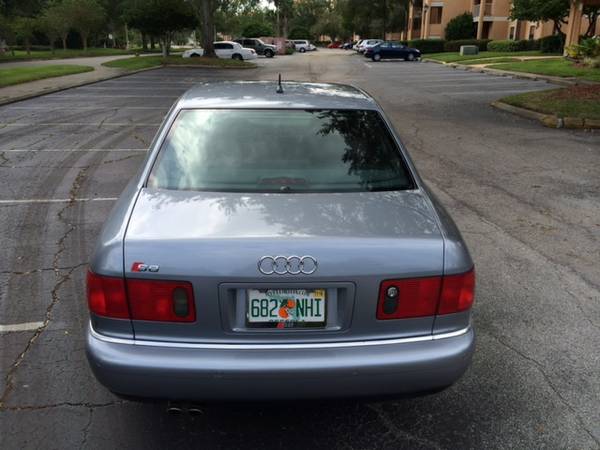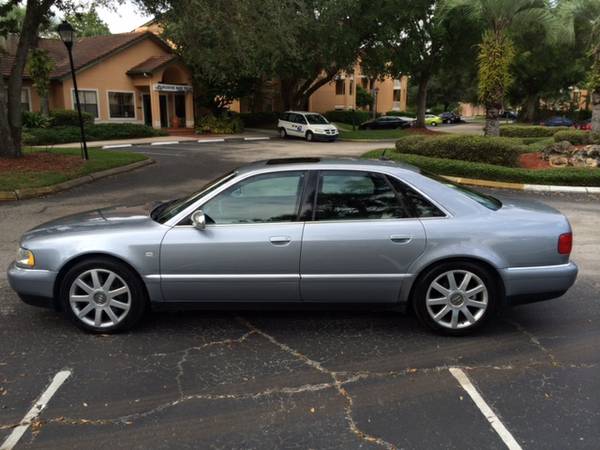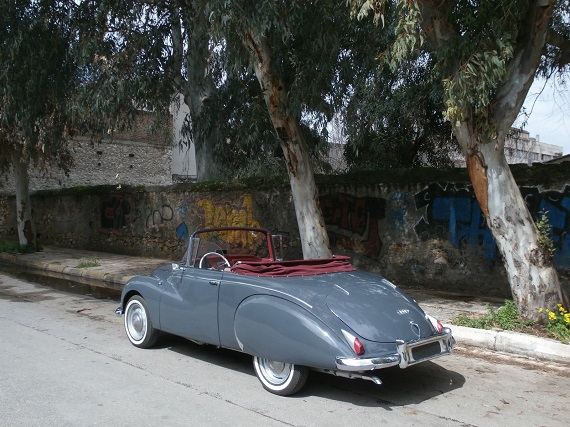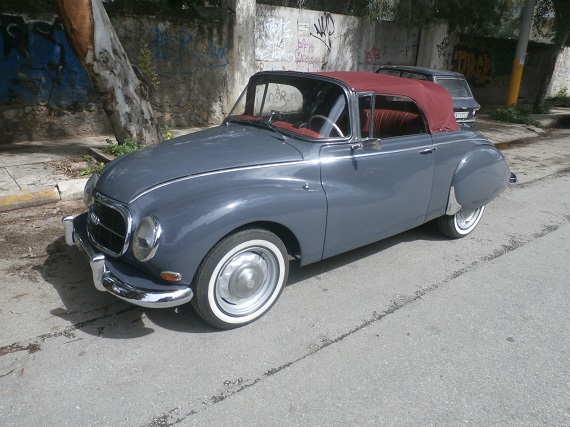If C4 S4s and S6s in good shape, such as yesterday’s feature listing 1993, are hard to come by, the limited run 1995 Avant version is especially so. Not many of these wagons were brought to the U.S.; depending on your source, a reported 300 made it here. Compare that to the “rare” E30 M3 (of which 5,000 were imported) or even Audi’s own super-rare Quattro – a staggering 663 of those made it here, though you wouldn’t know it. Plus, the nature of the S6 Avant meant they were snapped up by enthusiasts who used them, and often used them hard. Exact numbers still alive today are hard to come by, but figure it’s reasonably lower than the 300 original units. Back out the number with under 200,000 miles and the number gets much smaller. And to find two in a week in good condition with nice modifications? Time to play the lottery:
Tag: Audi
It is with a tinge of regret that I post nearly every S8, but especially the 2003 models. That’s because they’re one of my favorite cars, and with only 1,200 total examples imported to the U.S., they’re not exactly common. This is especially true when it came to the last year of the D2 S8; you had to select a no-cost “Limited Edition” package three special color combinations. The Brilliant Black is nice and Ming Blue is always pretty, but for my money no S8 matches the color combination of the third; the Avus Silver Pearl with Oxblood interior. Only 100 of these cars were made up and it feels as though I’ve let half of those slip through my hands:
CLICK FOR DETAILS: 2003 Audi S8 on Craigslist
6 CommentsAs depreciation continues to work its wonderful magic, there are a number of excellent cars falling into the sub $30k range which is the cap of what I consider to be reasonable at this point in my life. If you’ve got $30k to spend on a car then then the field is wide open, E90 M3s, 987 Caymans and the B8 S5 are all options. At that price point they’re most likely not the garage queen you dream of but clean, mechanically solid examples with relatively low miles are out there. I think this particular car is one of those examples, and with just under 70k on the clock it looks to have been well cared for. I guess that’s what starting life as a corporate fleet vehicle in California will do for a car.
CLICK FOR DETAILS: 2009Â Audi S5 On eBay
1 Comment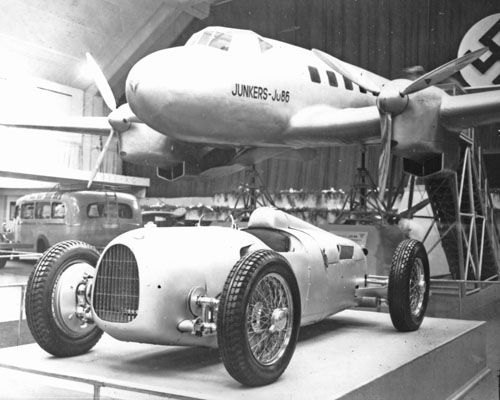
A 1936 Auto Union Type C sits below a similarly streamlined Junkers JU-86 at an exposition
As we saw in the last few installments, Daimler-Benz and Auto Union had heavily engaged in racing – a massive investment for both, pushing the boundaries of existing technology and redefining how motor racing was to be undertaken. The question in today’s installment was who this methodical approach to racing benefited the most. Was the government’s investment in racing worthwhile? Was Auto Union’s gamble on building an unconventional race car a success? Were the extremes to which Daimler-Benz was willing to stretch its racing budget realized in results over the competition? Today we look at some of the more pragmatic reasons behind the motivations of both companies and some of the ideology behind government which helps explain the involvement of both.
Link To Part 4
FIVE: FOR COMPANIES, GOVERNMENT, COUNTRY?
If you’ve been following my 6-part documentary on the Silver Arrows, you’ve seen the four rings of the Auto Union pop up. Now synonymous with Audi, the Auto Union was in fact four different companies that banded together, much like the Volkswagen Group of today. Like the Volkswagen Group, they had a range of cars; Horch for ultra-luxury, Audi was the sportier gentleman’s car, Wanderer covered the middle range and the entry level products and motorcycles were covered by DKW. All of the companies, independently, had significant history, but as we’ve seen in the Silver Arrows documentary, the depression years in the 1920s and 1930s meant that just like Daimler and Benz, the Auto Union was a partnership formed out of necessity for survival in a market where few cars sold. However, as we’ve also seen, the massive investments in infrastructure and breaks on taxes meant that the automobile industry was experiencing a big push by the mid 1930s, coupled with new technology and aerodynamic designs. One of the most promising designs for the Auto Union was the DKW F9; a versatile, aerodynamic small car, it resembled the KdF “Volkswagen” (Beetle) prototypes but was more refined. However, the outbreak of the war stalled the project, slated to launch in 1940. As with other similar projects by German automobile companies, the remnants of the company picked up the project in the late 1940s, and the “new” DKW F91 project rolled out in 1953 as the DKW 3=6 “Sonderklasse”. With a .9 liter two stroke inline-3, the performance wasn’t going to shock you but it was a cleverly packaged car and sold well. It was replaced in the late 1950s by an updated version, now named the Auto Union 1000; updated lightly and with more power from the now 1.0 liter motor, it was available in 5 different configurations and was the basis for the much loved but rarely seen 1000SP roadster – the mini-Thunderbird. Today’s example is an interesting 1962 coupe that apparently was converted into a cabriolet at some point:
